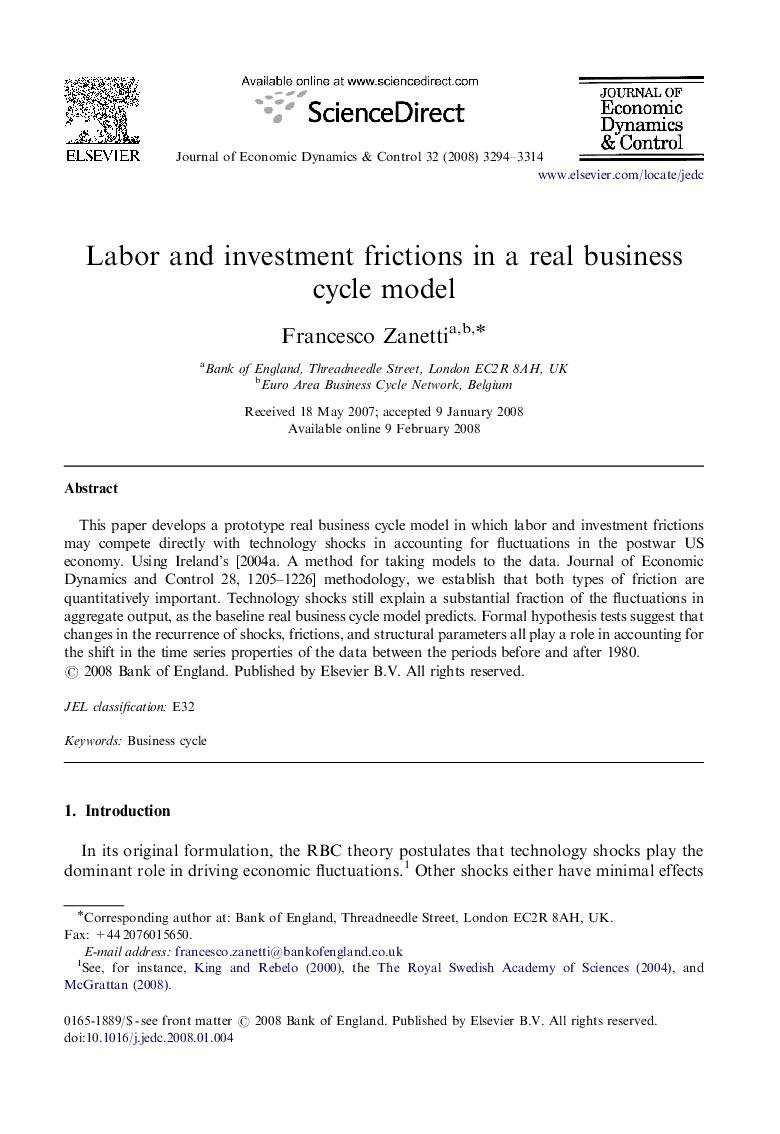| Article ID | Journal | Published Year | Pages | File Type |
|---|---|---|---|---|
| 5099348 | Journal of Economic Dynamics and Control | 2008 | 21 Pages |
Abstract
This paper develops a prototype real business cycle model in which labor and investment frictions may compete directly with technology shocks in accounting for fluctuations in the postwar US economy. Using Ireland's [2004a. A method for taking models to the data. Journal of Economic Dynamics and Control 28, 1205-1226] methodology, we establish that both types of friction are quantitatively important. Technology shocks still explain a substantial fraction of the fluctuations in aggregate output, as the baseline real business cycle model predicts. Formal hypothesis tests suggest that changes in the recurrence of shocks, frictions, and structural parameters all play a role in accounting for the shift in the time series properties of the data between the periods before and after 1980.
Keywords
Related Topics
Physical Sciences and Engineering
Mathematics
Control and Optimization
Authors
Francesco Zanetti,
